How much cereal do you eat? Who makes most of it? The British are almost the biggest consumers of cereal in the world, second only to Ireland. Kellogg is the prominent player in the world of breakfast and produces more than three out of every ten packets eaten in the UK.
The company manufactures and markets ready-to-eat cereals (i.e. not hot cereals like porridge) and nutritious snacks such as cereal bars. Kellogg has 42% value share of the market for ready-to-eat cereals in the UK – a market that is worth £1 billion at retail sales value. This makes Kellogg the market leader in this sector.
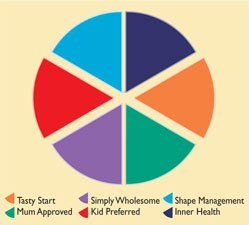
Markets are divided into market segments and there are six key segments to the Kellogg market.
- Tasty Start – the cereals that most people will eat to begin their day. Kellogg’s brands include Kellogg’s Corn Flakes and variations, such as Kellogg’s Crunchy Nut.
- Simply Wholesome. These are ‘good for you’ brands, such as Kellogg’s Fruit ‘n’ Fibre, Alpen and Kellogg’s Just Right.
- Shape Management. Brands that can enable customers to manage their weight or shape, such as Kellogg’s Special K and Fitnesse.
- Mum Approved. Those that mothers see as being good for their children, such as Kellogg’s Rice Krispies and Shreddies.
- Kid Preferred. The brands that children themselves prefer, such as Kellogg’s Frosties, Kellogg’s Coco Pops and Weetos.
- Inner Health. These are the brands that help people with digestion, such as Kellogg’s All-Bran and own-label Bran Flakes.
Promotion
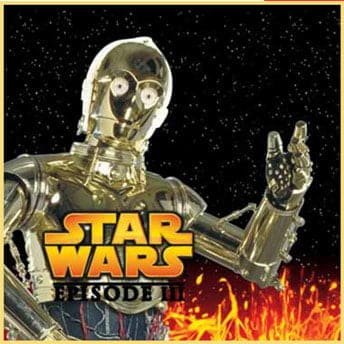
There are two reasons for promotion. It:
- lets consumers know about products and services
- tries to encourage consumers to purchase the product or service, often by telling them about the benefits they will gain.
Promotion is just one element of the marketing mix, known as the ‘four Ps’. These stand for:
- Price
- Product
- Promotion
- Place.
A marketing mix means that the business must have a high-quality product, for sale at a price that is reasonable and at places where people can easily buy it.
Promotion informs customers about the product and tries to encourage them to buy. Methods of promotion include advertising, public relations, value-added offers (e.g. three-for-two promotions or buy-one-get-one-free), price reductions, free gifts, coupons, loyalty rewards and point-of-sale material.
Kellogg arranges effective promotions around more than just the consumer. There are three key elements that all have to be integrated and work together smoothly. These are the:
- Consumer: who can be encouraged to purchase by an attractive and exciting offer.
- Advertising: the consumer promotion needs to be brought to the public’s attention with a strong message.
- Trade: Kellogg needs them to support the promotion. Shops and other sales outlets should know the advertising is coming, so they can buy in enough stock and benefit from the promotion by displaying point-of-sale material.
- Bringing these areas together involves accurate planning across all parts of the business. Kellogg management has a strategic overview of the whole process. This ensures all elements of the business are working together to create what is called, at Kellogg, an ‘event’.
Promotion at Kellogg
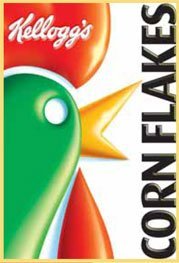
Kellogg recently carried out two effective promotions aimed at totally different audiences. The first targeted families and drew on the incredible success of the Star WarsTM movies. This was a large-scale event extending over a number of Kellogg’s brands appealing to families. These included Corn Flakes, Frosties, Rice Krispies and Coco Pops.
The event coincided with the worldwide movie release of the final Star WarsTM movie – Revenge of the SithTM. A large event such as this needs to create consumer interest straightaway, have 100% trade backing and use a number of varying methods of promotion.
Kellogg used a 30-second TV commercial to support the event – the first time Kellogg had used this time-length for a promotional advertisement since 1999 – linking their own familiar characters (Tony the Tiger and Coco Monkey) with Star WarsTM.
There was over £250,000 spent on TV advertising with additional online support making it the company’s biggest family event for 2005. It involved the production of over 30 million promotional packs, some of which featured free mini LightsabersTM in every pack. The other packs allowed consumers a chance to win a LightsaberTM signed by actor Christopher Lee or one of 500 runners-up prizes of a Hasbro electric LightsaberTM. The promotion ran across both the cereal brands and some cereal bars allowing Kellogg to take advantage of Star WarsTM in both categories.
To measure the success of such an event, Kellogg observes the changes occurring within its market. The advertising for the event reached 65% of its target market audience. Its effectiveness can be shown by the increase in sales and in Kellogg’s market share:
- Kellogg’s share of the ready-to-eat-cereal market for families rose from its usual 40-45% to 53%.
- An extra 859,000 households purchased at least one of the Star WarsTM brands during the promotion when compared with the previous period.
The second event was aimed at adults and involved just one brand – Kellogg’s Crunchy Nut. Ten million packs carried the distinctive artwork, offering a chance to win one of ten special edition gold coloured Minis.
Kellogg used this event to apologise to its customers for making Crunchy Nut so irresistible! Consumers were invited to text in or enter on line or by post for a chance to win one of these unique prizes. Hundreds of thousands took the opportunity to do so and if you see a gold coloured Mini in the UK it will have been one of the prizes from the Sorry promotion.
The event provided great exposure and interest for the brand and encouraged consumers to try the newer variants of Crunchy Nut – Crunchy NutClusters and Crunchy Nut Nutty.
Above and below the line
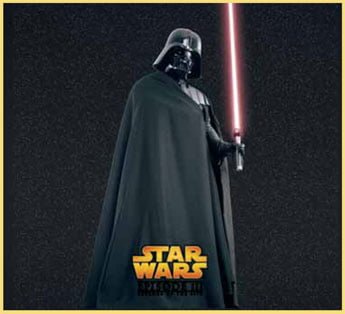
Promotion is divided into two areas: above-the-line and below-the-line.
Above-the-line promotion is that which is paid for directly. It includes spending on TV, radio, poster and press advertising and on other paid-for media such as the Internet.
Below-the-line promotion refers to those methods of promoting a product that do not use direct advertising. These include public relations, such as getting stars to endorse products, or news and magazine stories featuring the product. They also involve packaging and point-of-sale material. Kellogg used both in the effective Star WarsTM campaign, including TV advertising along with special packaging, inserts and competitions.
Kellogg also separates below-the-line spending between consumers and the trade. For the trade, the Star WarsTM event included buy three for the price of two and special value-added offers. For consumers, there was a free insert in the box and the chance to win special prizes.
It is vital that all parts of the promotion are effective and within the law. There are two types of ‘bad ads’ to take into consideration. Firstly, those that fail to reach the target audience and increase sales; these are bad for the business, but not disastrous. The second type includes those that are offensive or illegal.
Advertisements that do not fall within the law (e.g. by breaking the Trades Descriptions Act), or which break ASA guidelines, can attract large financial penalties which can seriously damage a business. If an advertisement breaks guidelines it has to be pulled, even though this is expensive.
Co-ordinating promotion across the business
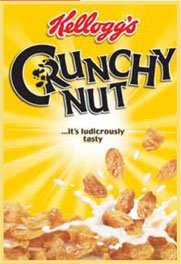
Major promotions like the Star WarsTM and Sorry events have to be co-ordinated across all the different departments. Management will make the major decisions about the type and direction of a promotion and departments such as sales, marketing, and even the legal division, will be involved in organising the event.
A promotion will affect all parts of Kellogg business including:
- Sales – both to the consumer and to the trade
- Marketing – all the elements of the marketing mix
- Packaging – the designs for promotional packs, inserts and other parts of the promotion need to be supplied
- Legal – this does not just involve making sure the promotion is legal, but also handling the contracts for the various agencies and partners that help the business with the event
- Quality – any free gifts or other promotional items have to be tested for quality and safety
- Supply Chain – Kellogg needs to make sure that it has enough stock to keep the trade supplied when demand increases. This could mean building up stocks in response to the forecast change in demand
- Finance – the event has to be budgeted for. Finance will also carry out predictions and feed back information on the effectiveness of the event through the changes in sales value before and after.
The Consumer Promotions Team is responsible for the overall management of the event. The function of this team is critical to the success of the promotion and therefore to the business itself. It is responsible for:
- Communicating appropriately with all other areas of the business and external bodies. This includes agencies, the media and event partners, such as Hasbro and Lucasfilm.
- Developing original, creative, innovative and exciting ideas that will attract the attention of consumers. This happens in partnership with the brand teams and specialists, such as advertising agencies.
- Delivering the event, ensuring all parts are working together in an effective way and each part is launched and supported at the right time and in the right place.
- Getting the flow of promotional stock into and out of stores on time – this is critical to an event’s success.
It is difficult to predict how sales will respond given the variances in trade display and consumer uptake. Getting it wrong means that shops may not have the right or sufficient stock and it is critical that demand is continually monitored with fall-back options if required.
In the case of the Star WarsTM promotion, Kellogg was able to balance fixed stocks of the insert packs with the variable competition packs. A failure to do so would have the added, unfortunate effect of undermining both consumer and trade confidence in any future promotions.
Conclusion

What a consumer sees is an exciting, professional and relevant promotion. This encourages them to choose the promoted brand and, in the case of almost a million households in the Star WarsTM campaign, to buy the Kellogg cereal brand. Behind these results is an enormous amount of planning and communication, all of which must be both effective in itself and in supporting other parts of the event.
A successful event takes teamwork, careful management and precise communication. But that isn’t the end; the business must then immediately go back to planning. This will help to decide how to keep the market it has gained, or how to create yet another exciting and impressive promotion.
STAR WARS ® TM is a trademark of Lucasfilm Ltd, and its affiliate. All STAR WARS property ® 2005 Lucasfilm Ltd. All rights reserved.
